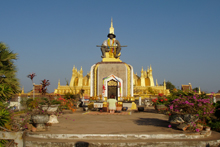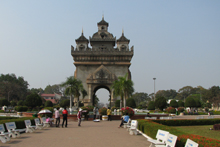Basic information


Laos,
Lao PDR is a landlocked state in Southeast Asia surrounded by Vietnam, Cambodia, Thailand, Myanmar and China.
Its history began in the 8th century when the first Lao state was founded but the time of its greatest glory didn´t start until 15th century. For 400 years the Kingdom of a Million Elephants, as Laos was called then, belonged to biggest, wealthiest and most influential in the region. The kingdom fell apart in the 19th century when the area was colonized by the French whose influence is still visible in urban architecture.
The darkest times for Laos came with Vietnam War when the US troops bombed the whole Ho Chi Minh trail. At the same time there was a civil war in Laos which ended only as late as in 1975 with the establishment of communist republic. The political system hasn´t changed since, making Laos one of the last communist countries in the world.
The area of Laos is approximately three times bigger than that of the Czech Republic but the population consists of mere 6.5 million inhabitants. Nevertheless, the ethnic composition is incredibly varied. While the south is predominantly inhabited by Buddhist ethnic Laotians, in the mountains on the north you can find variety of colourful animistic tribes. The climate is very varied as well, due to the geographic location. Generally, we speak of tropical monsoon climate with high precipitation, especially during the rainy season between May and September. The temperature is usually high throughout the year (daily maximum of 27 – 35°C), but can be very unpredictable and changeable in the highest mountains.
Laotian economy is highly dependent on their neighbours in terms of import/export (esp. Thailand and Vietnam) and foreign direct investment (China). Roughly half of GDP is produced by agriculture – specialized in rice - which employs three quarters of the population. Next important are mining, famous Lao beer production and flourishing tourism.
Laos is a developing country with high poverty index and only 65 % literacy rate. The situation has been however slightly changing recently, for example in the case of improving sanitation and health care (leading to higher life expectancy) and relatively fast economic growth.
("Peace, independence, democracy, unity and prosperity")


